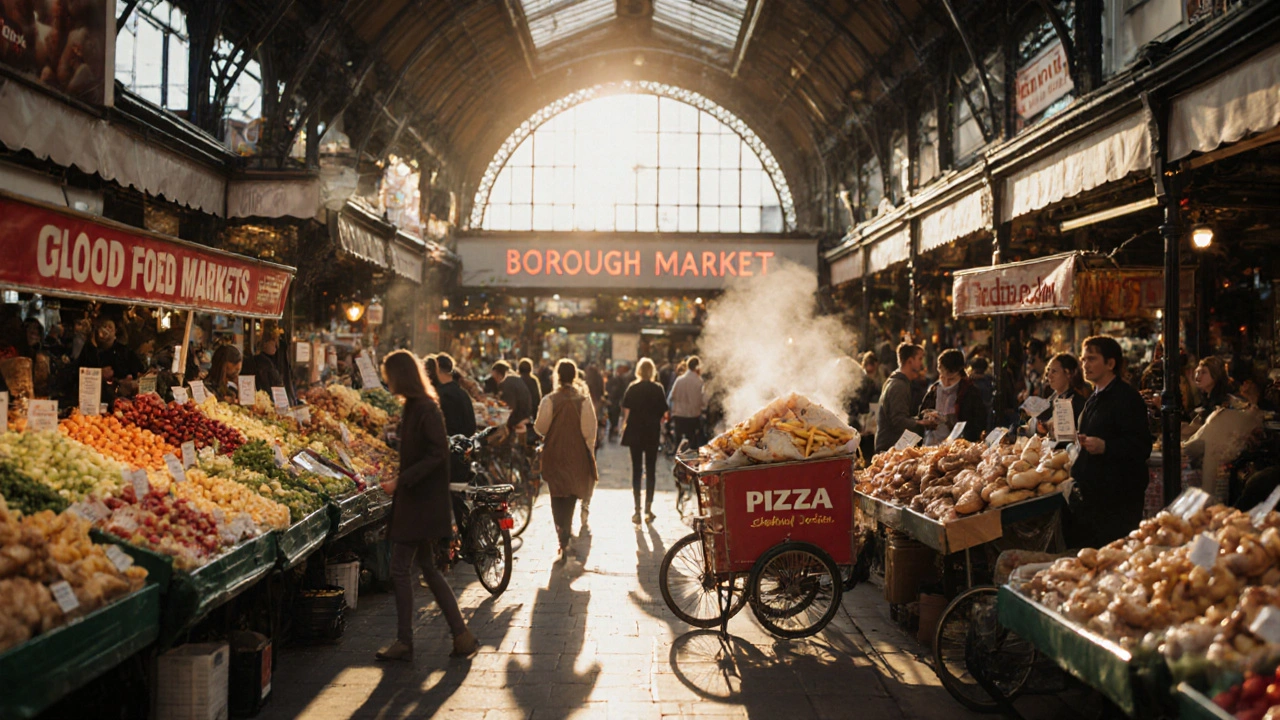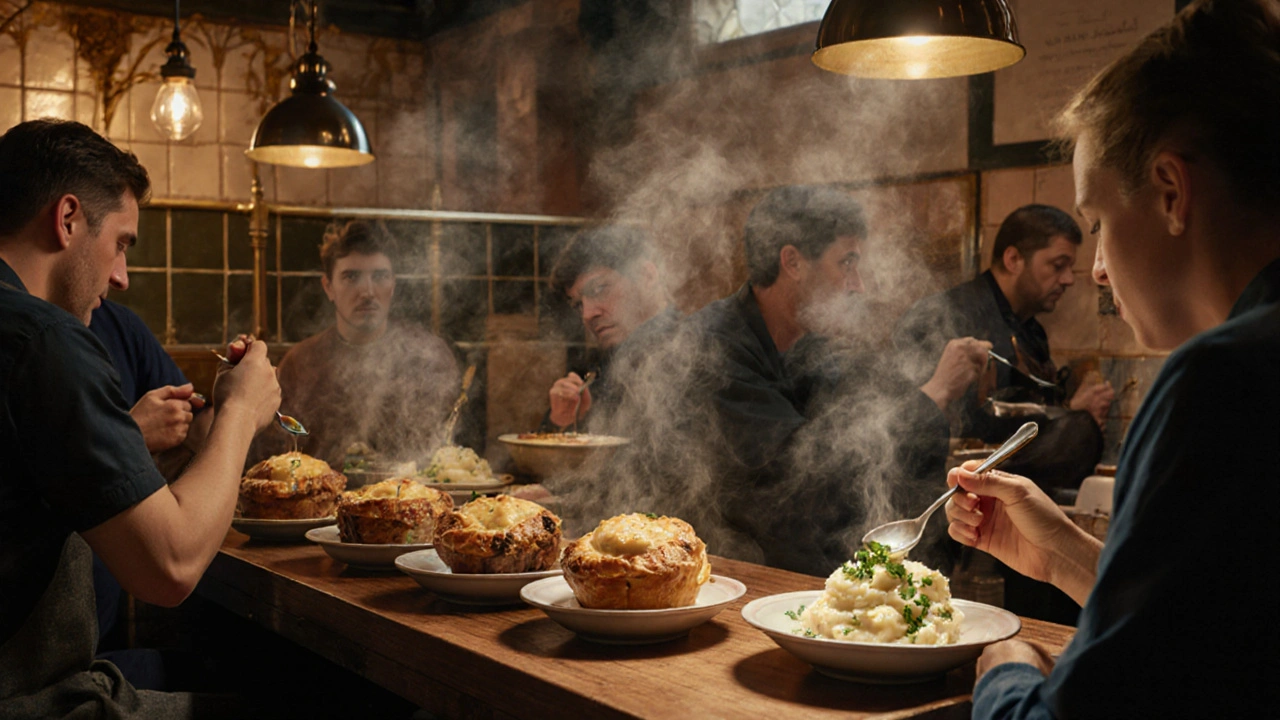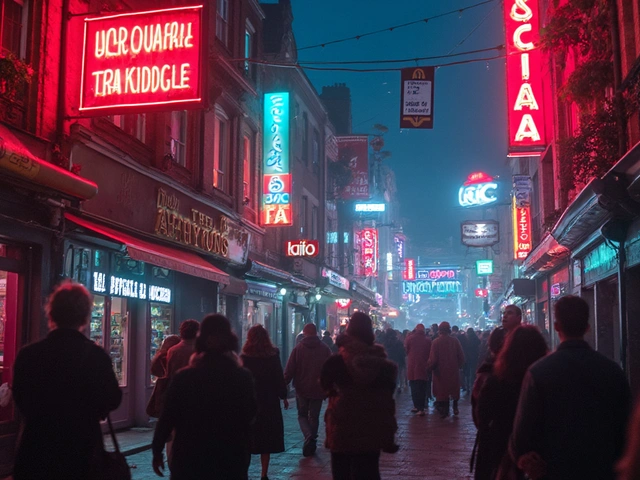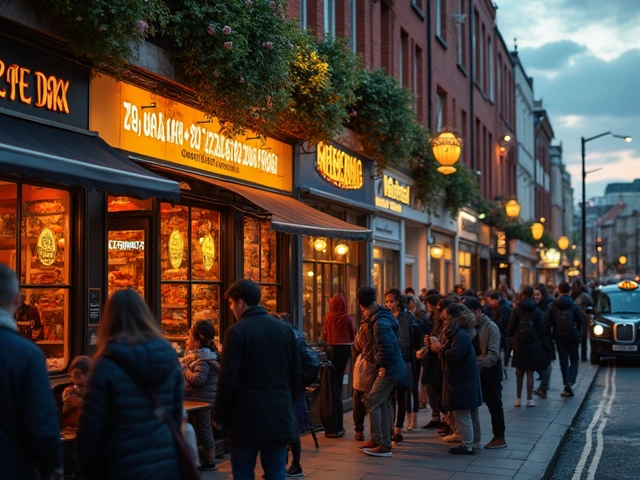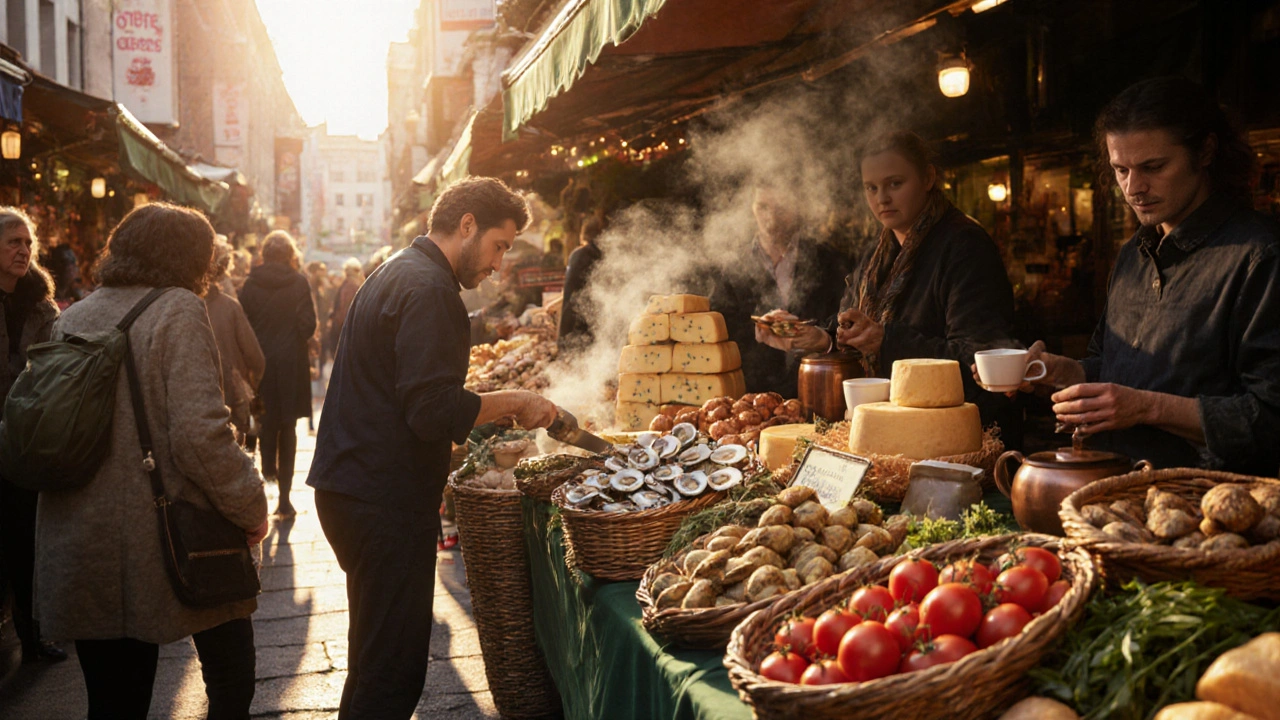
You’ve seen the postcards. You’ve heard the clichés. Fish and chips. Tea with scones. But if you think that’s all London has to offer, you’re missing out on a city that eats like a global melting pot with a British backbone. London doesn’t just serve food-it serves stories. Every bite tells you where someone came from, why they stayed, and what they brought with them. This isn’t just a list of dishes. It’s a map to the real London.
What You’re Really Eating in London
Fish and chips? Sure, it’s iconic. But it’s not the whole story. London’s food scene is shaped by decades of immigration, trade, and adaptation. You won’t find it in tourist brochures, but you’ll find it in the backstreets of Brixton, the corner shops of Peckham, and the 24-hour curry houses of Brick Lane. The real London eats what its people cook-and that’s a lot more diverse than you think.
Take the British curry. No, it’s not from India. It’s from the UK. A thick, spicy, tomato-based gravy with tender chicken or lamb, served with pilau rice and naan. It’s the most popular dish in the country. More people eat chicken tikka masala than fish and chips. And it wasn’t invented in Mumbai-it was invented in Glasgow, perfected in Birmingham, and now it’s a staple in every London pub.
Must-Try Foods in London (That Aren’t Fish and Chips)
Here’s what you actually need to try before you leave.
- Chicken and mushroom pie - Not fancy, not Instagrammable, but the ultimate British comfort food. Look for it in a pub with a chalkboard menu. The crust should be flaky, the filling rich, and the gravy pooling just enough to soak into the mashed potatoes.
- Jamaican patties - Spiced beef or chicken wrapped in a golden, flaky pastry with a hint of allspice and scotch bonnet heat. You’ll find them in bakeries across South London. Try one from Woolwich Market or Peckham’s African Food Market.
- Black pudding - A type of blood sausage, dense, savory, and surprisingly smooth. Often served fried with eggs and toast. Don’t let the name scare you. It’s like a rich, earthy sausage with a hint of iron. Try it at Borough Market from St. John Bread and Wine.
- Chaat - Not Indian food. Not Pakistani. Not Nepali. It’s London’s own version of street snacks. Think crispy puris topped with yogurt, tamarind chutney, chickpeas, and spices. You’ll find it in Southall and Wembley. The best spot? Chaat Corner on Ealing Road.
- Nigerian jollof rice - Not the Senegalese version. Not the Ghanaian one. London’s jollof is its own beast: smoky, tomato-heavy, with chicken or goat meat. It’s the unofficial dish of West London. Try it at Asun’s Kitchen in Hounslow.
- Dim sum in Chinatown - Yes, it’s touristy. But the dim sum here is better than most cities in the U.S. or Canada. Go early. Get the har gow (shrimp dumplings), char siu bao (barbecue pork buns), and cheong fun (rice noodle rolls). The steam is still rising when it hits your table.
- East London bagels - Not New York bagels. These are denser, chewier, and topped with sesame or poppy seeds. They’re baked fresh in the Jewish bakeries of Brick Lane. Order one with smoked salmon and cream cheese. Or just plain, toasted, with a smear of butter.
- Welsh rarebit - Fancy cheese on toast? No. This is melted cheddar with mustard, ale, and a dash of Worcestershire sauce, broiled until bubbly. Served on thick toast. It’s the perfect pub snack after a pint. Try it at The Eagle in Farringdon.
Where to Eat Like a Local
Forget the restaurants with Michelin stars. The best food in London is in places that don’t even have websites.
Start with Borough Market. It’s not just for tourists. Locals come here for the cheese, the olives, the fresh oysters, and the handmade pastries. Grab a coffee from Market Kitchen and wander. Watch the chefs slice through whole lambs. Taste a sample of aged cheddar from the West Country. Eat a warm, sticky gingerbread from the Polish stall.
Then head to Walthamstow Market on a Saturday. It’s one of the oldest open-air markets in Europe. You’ll find Caribbean jerk chicken, Bangladeshi biryani, and Turkish gözleme. No one speaks English at some stalls. But they’ll point to what’s hot, and you’ll know it’s good because the queue is out the door.
And don’t miss Brick Lane on a Sunday. The curry houses are open, but so are the bagel shops, the vegan falafel carts, and the Ethiopian coffee stalls. The air smells like cumin, smoke, and sugar. You’ll see people eating curry for breakfast. Locals do. And you should too.
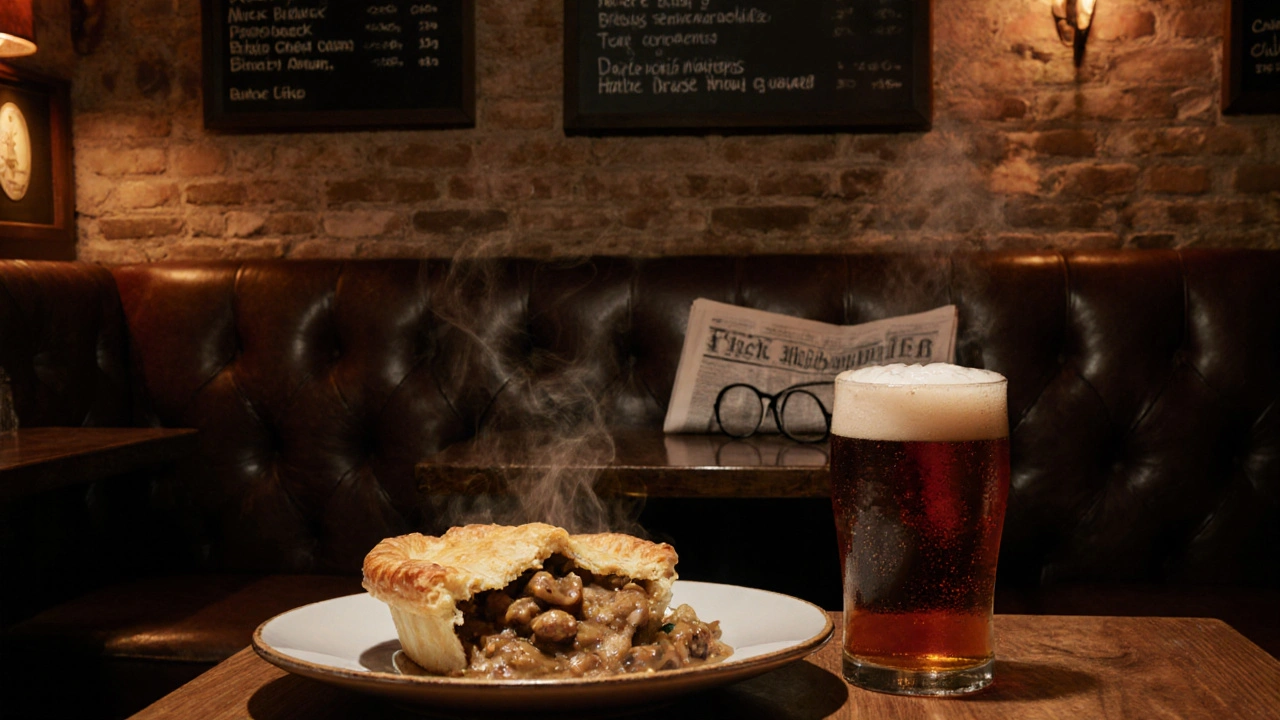
What to Avoid
Not everything labeled “British” is worth your time.
Avoid the £18 “traditional Sunday roast” in Covent Garden. It’s overpriced, under-seasoned, and served with soggy Yorkshire pudding. The real deal is in the pubs outside the tourist zone-places like The Prince Albert in Brixton or The Harp in Camden.
Don’t fall for “London-style” pizza. It’s just thin crust with pineapple and pepperoni. If you want real pizza, go to Pizza Pilgrims in Soho. Or better yet, find the Sicilian slice truck near King’s Cross. It’s run by a guy from Palermo. He’s been here 22 years. His crust is thick, oily, and perfect.
How to Eat Like a Londoner
Londoners don’t wait for dinner. They snack all day.
- Breakfast? A bacon sandwich from a corner shop. No fork. No plate. Just paper wrap and a coffee.
- Lunch? A pie and a pint. No salad. No avocado toast.
- Dinner? Curry. Always curry. Even if you had curry last night.
- Midnight snack? A kebab. But not the greasy one on the high street. Look for the one with the queue. The one with the guy who knows your name.
Don’t overthink it. Eat where the locals are. If the place has a queue, a chalkboard, and no English menu, you’re in the right spot.

Food in London: A Cultural Snapshot
London’s food doesn’t just feed you-it tells you who the city is. The curry houses? They’re run by families who came from Bangladesh in the 1970s. The bagels? Left by Jewish immigrants fleeing pogroms. The jollof rice? Brought by Nigerian students who stayed because they fell in love with the city.
There’s no single “London food.” There’s a hundred. And each one carries a history. You’re not just eating a meal. You’re tasting migration, resilience, and adaptation.
What’s New in 2025
This year, London’s food scene got even wilder.
- Plant-based jollof is trending. Vegan versions of Nigerian rice are popping up in Peckham and Croydon. Made with smoked mushrooms and fermented soy.
- London-style ramen is here. Not Japanese. Not Korean. It’s miso broth with roast pork belly, pickled cabbage, and a soft-boiled egg. Found at Ramen House in Shoreditch.
- British cheese boards are back. But now they feature rare cheeses like Stinking Bishop, Baron Bigod, and Shropshire Blue. Try them with a glass of cider at The Cheese Bar in Borough Market.
Final Tip: Eat with Your Eyes Open
Don’t just eat. Watch. Listen. Ask questions. The woman behind the counter at the Nigerian food stall? She’s been making jollof for 30 years. The guy selling samosas in Southall? His dad taught him how to fold the dough in Lahore. This isn’t just food. It’s heritage.
So skip the fish and chips for one day. Go find the curry that doesn’t have a menu. Eat the pie that’s only served on Tuesdays. Try the thing you can’t pronounce. You’ll leave London with a full stomach-and a deeper understanding of what this city really is.
What is the most popular food in London?
Chicken tikka masala is the most popular dish in London-and the UK. It’s more commonly eaten than fish and chips. It’s a British invention, born in the 1970s in Glasgow and perfected in London’s curry houses. Thick, creamy, mildly spicy, and served with rice and naan, it’s the unofficial national dish.
Where can I find authentic Nigerian food in London?
Head to Hounslow or Southall for the best Nigerian food. Asun’s Kitchen in Hounslow serves the most authentic jollof rice, pounded yam, and egusi soup. Look for places with a long line and a menu written in English and Pidgin. The food is spicy, smoky, and deeply flavorful.
Is Borough Market worth visiting for food?
Yes, but go early-before 11 a.m.-to avoid crowds. It’s not just a tourist trap. Locals come for the fresh oysters, aged cheeses, handmade pastries, and seasonal produce. Try the Cornish crab sandwich, the French crêpes, and the Polish pierogi. Sample before you buy.
What’s the best time to eat curry in London?
Midnight. Seriously. Many curry houses in Brick Lane and Southall stay open until 4 a.m. and serve the best food after 11 p.m. The spices have time to settle, the rice is perfectly fluffy, and the staff know your order by heart. It’s the real London experience.
Are there good vegetarian options in London?
Absolutely. London has one of the highest rates of vegetarian and vegan dining in Europe. Try the jackfruit curry at Vegan Junk Food Bar, the cauliflower shawarma at Plant Based Kitchen, or the mushroom Wellington at The Gate. Even traditional pubs now offer plant-based pies and sausages.

